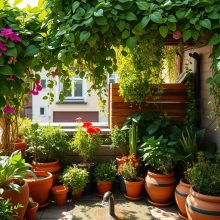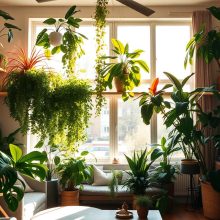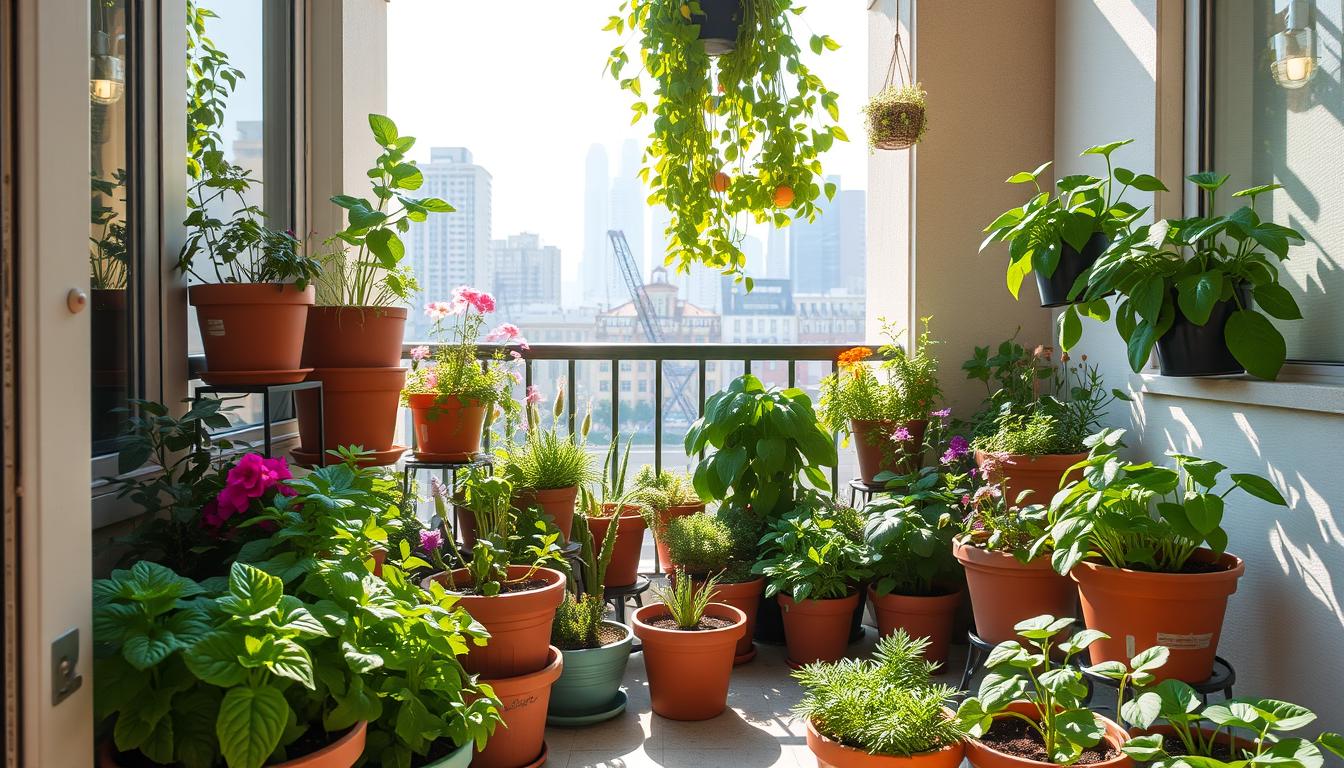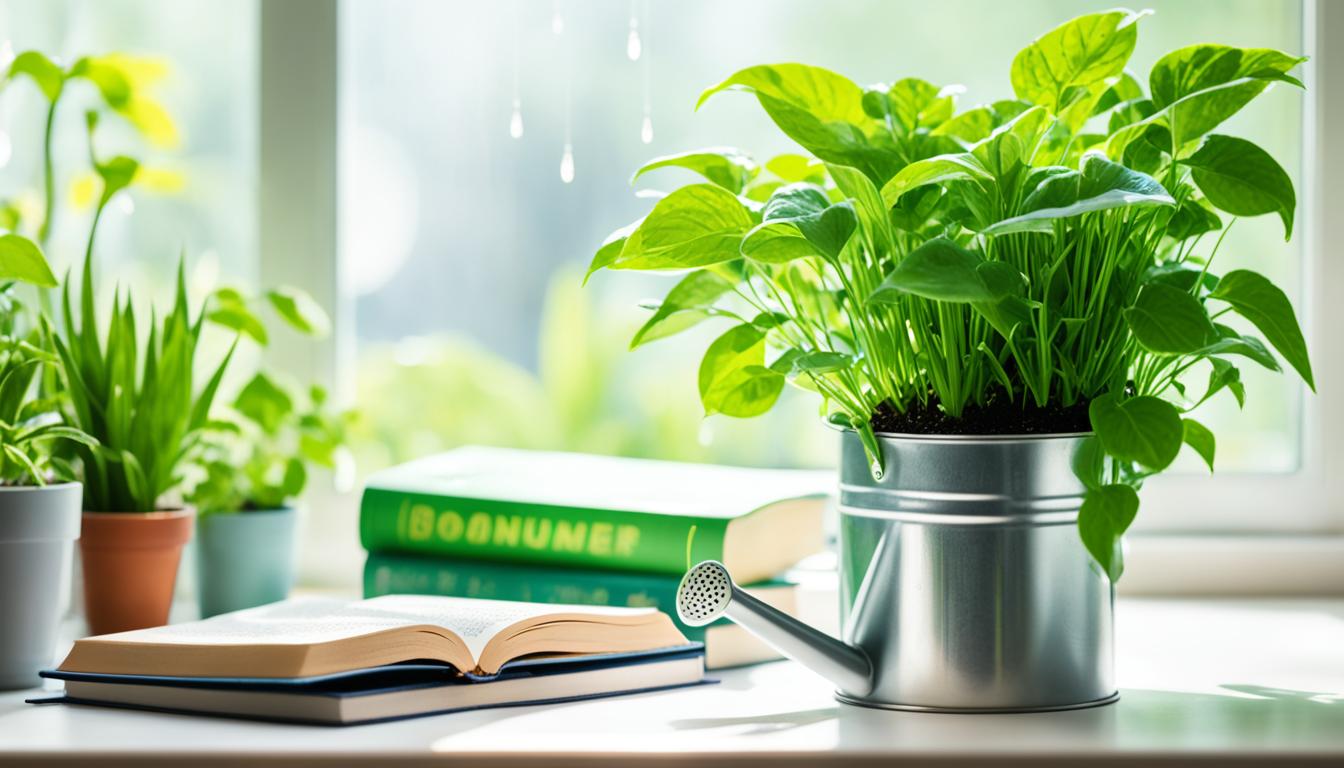Apartment Gardening Made Easy: Cultivate a Green Oasis at Home
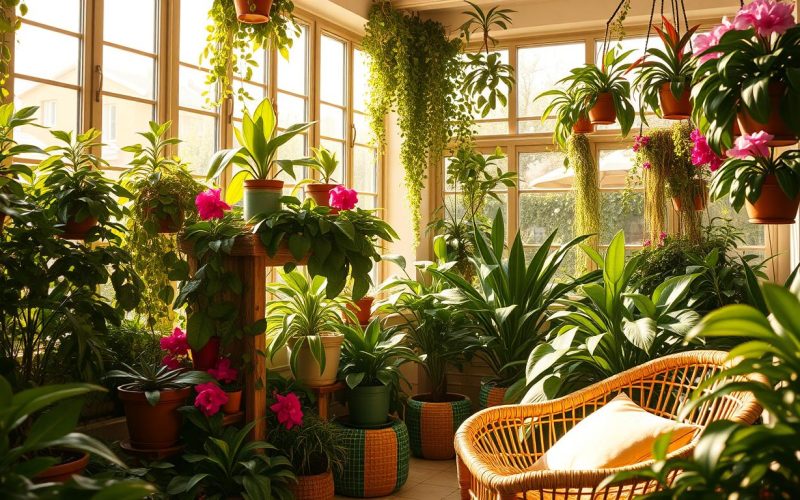
Living in the city doesn’t mean giving up on gardening. Apartment gardening has become easy and rewarding for city folks. Now, people can grow lush green spaces in their small homes with new techniques and smart ideas.
Indoor gardening is more than just pretty. It connects us to nature, makes the air cleaner, and lets us grow our own food. The Garden Tower Project says balcony gardens are good for the planet and make our homes better.
Even if you live in a tiny place or a small apartment with a balcony, you can create a garden. This guide will show you how to grow a great indoor garden. We’ll tackle common problems and offer solutions for gardening in apartments.
Key Takeaways
- Apartment gardening is accessible to everyone, regardless of space limitations
- Indoor gardens improve mental health and living environment
- Urban gardening can be both beautiful and functional
- Small spaces can produce remarkable green results
- Gardening skills can be learned and improved over time
Introduction to Apartment Gardening
Urban living doesn’t mean you have to give up your green dreams. Small space gardening has changed how city folks create vibrant indoor gardens. Container gardening is a great way for apartment dwellers to turn their living spaces into lush, productive areas.
Apartment gardening offers a world of possibilities for plant lovers with little space. Whether you have a tiny balcony, a sunny windowsill, or just a small corner, you can grow a thriving garden. This garden will bring life and freshness to your home.
Benefits of Gardening in Small Spaces
Small space gardening has many benefits beyond just growing plants:
- Improves indoor air quality by filtering toxins
- Reduces stress and promotes mental well-being
- Provides fresh herbs and vegetables right at home
- Creates a personalized, green living environment
- Connects urban dwellers with nature
Common Misconceptions About Apartment Gardening
Many think you need a big outdoor space to garden. But container gardening shows this is not true. With the right techniques and plant selection, even the smallest apartments can become green sanctuaries.
- Myth: You need a large garden to grow plants
- Reality: Creative container solutions make gardening accessible
- Myth: Apartments lack proper growing conditions
- Reality: Strategic plant placement and grow lights solve lighting challenges
Embrace the potential of small space gardening and turn your apartment into a green oasis. With creativity and commitment, anyone can create a thriving indoor garden.
Choosing the Right Plants for Your Space
Creating a thriving apartment garden needs careful plant selection. First, understand your living space and pick plants that fit indoor conditions. It’s important to match plants with your space and light.
Choosing the right edible plants for apartments is key. Not all plants grow well indoors. So, making smart choices is crucial.
Best Indoor Plants for Beginners
For beginners, some plants are easier to grow. Here are some top picks:
- Snake Plant: Extremely low maintenance
- Pothos: Tolerates low light conditions
- Spider Plant: Adaptable and easy to propagate
- Aloe Vera: Practical and medicinal
Herbs That Thrive in Small Environments
Edible plants for apartments can turn your kitchen into a mini herb garden. Here are some compact herbs for indoor growing:
- Basil: Grows quickly in small pots
- Mint: Spreads easily, requires minimal space
- Chives: Compact and versatile
- Parsley: Tolerates indoor conditions well
Considerations for Light and Space
Your garden design must consider natural light. South-facing windows get the most light, while north-facing get less. Use grow lights for plants in dark spots to help them grow.
Vertical gardening can make the most of small spaces. Use wall-mounted planters, hanging baskets, and tiered shelves to create a lush garden without taking up floor space.
Essential Tools and Supplies for Apartment Gardening
Container gardening in apartments needs careful planning and the right tools. The right equipment can turn a small space into a lush green oasis. Whether you’re new or experienced, knowing the essential items is key to success.
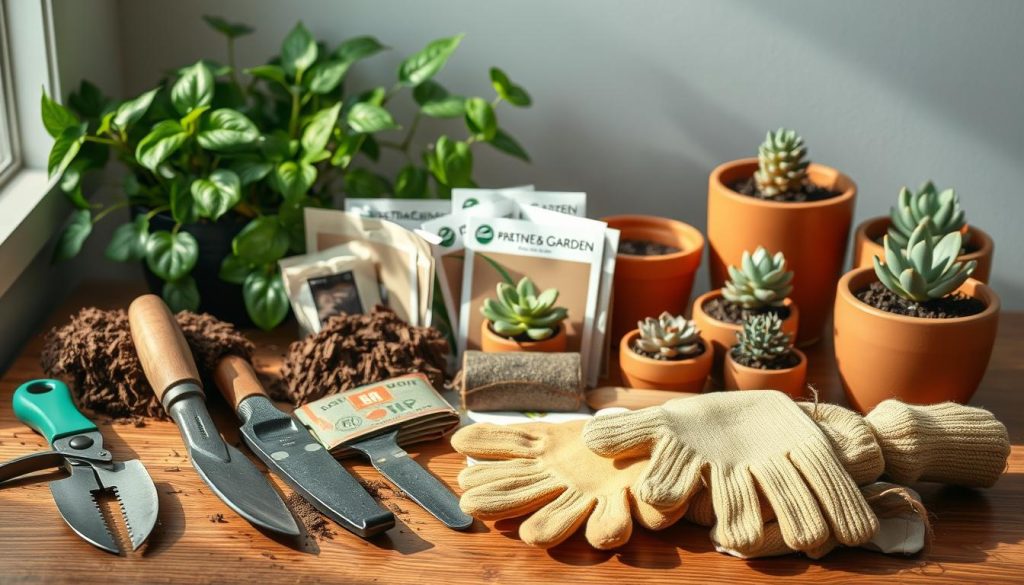
When starting your apartment garden, you’ll need a few important tools. These tools make growing plants easier and more fun. They help you use your space well and care for your plants.
Must-Have Gardening Tools
- Compact hand trowel for precise planting
- Small pruning shears for plant maintenance
- Lightweight gardening gloves
- Miniature watering can with narrow spout
- Spray bottle for misting delicate plants
Recommended Soil and Potting Mix
Good potting mix is crucial for apartment gardening. Choose a mix that’s light and drains well. It should be made for container gardens. Mixes with organic matter give plants the nutrients they need in small spaces.
Watering Equipment and Options
- Self-watering containers with built-in reservoirs
- Moisture meters to track plant hydration
- Drip irrigation systems for consistent watering
- Compact watering globes for extended moisture
Investing in these tools and supplies will help you create a productive apartment garden. It will bring nature into your home.
Creative Container Gardening Ideas
Turning your apartment into a green oasis is easy, even without a big outdoor space. Vertical gardening and balcony gardening are great for city dwellers wanting to use their small spaces well.
Choosing the right containers can make any small apartment look lush and green. Apartment folks can create amazing plant displays using smart gardening tricks. These tricks help use every inch of space.
Vertical Gardening Solutions
Vertical gardening lets apartment people grow plants without taking up too much floor space. Here are some useful ideas:
- Wall-mounted planter systems
- Hanging pot arrangements
- Compact trellises for climbing plants
- Tiered shelving units for multiple plant levels
Choosing the Right Containers
It’s important to pick the right containers for balcony gardening. Look for ones that:
- Match your plant’s root system needs
- Have good drainage
- Look good with your apartment’s style
- Fit in the space you have
DIY Planters for Unique Spaces
Be creative with container gardening by using things you already have. Mason jars, wooden crates, and old kitchen tools can be turned into cute plant homes. Just make sure they drain well and have enough room for roots.
With these vertical and balcony gardening tips, you can make your apartment a lively green space. It will show off your style and love for plants.
Maximizing Natural Light in Your Apartment
Starting a successful indoor garden begins with knowing your space’s light. Tips for apartment gardening stress the importance of light for plant health. Each corner of your apartment has its own light conditions, affecting your garden’s success.
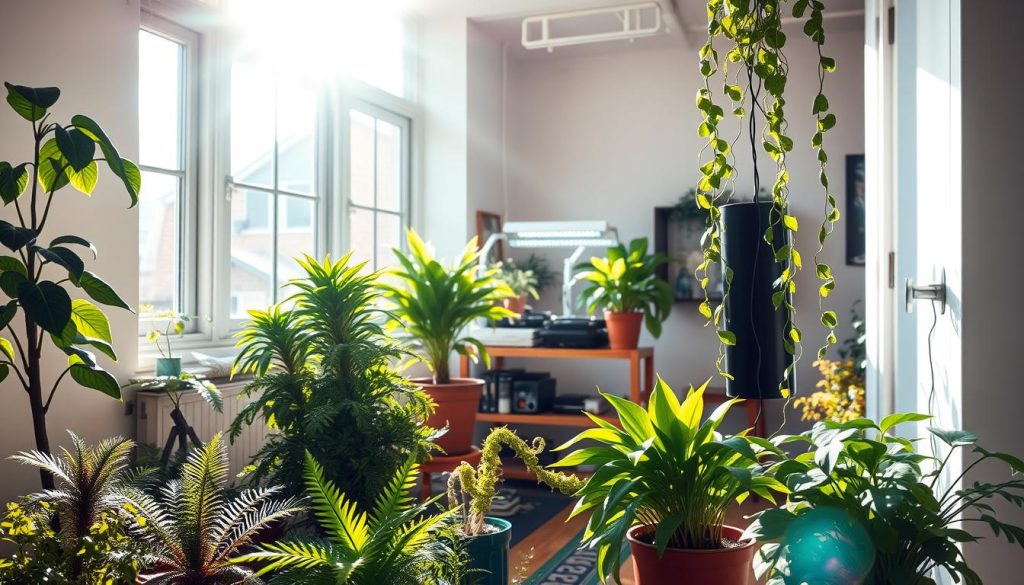
Sunlight is vital for plants, but not all need the same amount. Your apartment’s layout and windows greatly influence which plants will do well.
Understanding Plant Light Requirements
Plants fall into three light categories:
- Low-light plants: Great for north-facing windows or darker spots
- Medium-light plants: Best for east or west windows
- High-light plants: Need direct sunlight from the south
How to Position Plants for Optimal Growth
Placing plants wisely can make the most of available light. Rotate them every few weeks to promote even growth and prevent leaning. Place taller plants behind shorter ones to avoid shading.
Using Grow Lights Effectively
In places with little natural light, grow lights are key. LED grow lights are a good choice because they save energy. Place them 6-12 inches above your plants and keep the light on for 12-16 hours a day.
- Choose full-spectrum LED grow lights
- Use timers for consistent light exposure
- Monitor plant response and adjust distance as needed
Managing Water and Humidity Levels
Indoor gardening is all about finding the right balance of water and humidity. For those living in apartments, it’s key to keep plants hydrated and the environment just right. This helps your plants grow well in small spaces.
Best Practices for Watering Apartment Plants
Watering plants right is essential for apartment gardening. Since each plant needs different amounts of water, a single method won’t work for all. Here are some important tips:
- Check soil moisture by inserting your finger one inch deep
- Water when the top inch of soil feels dry
- Use room temperature water to prevent plant shock
- Drain excess water from plant saucers to prevent root rot
Techniques for Increasing Humidity
Indoor plants often struggle with dry air in apartments. Here are some ways to boost humidity:
- Group plants together to create a microclimate
- Place pebble trays filled with water near plants
- Use a small humidifier in your plant area
- Mist tropical plants regularly
Signs of Overwatering vs. Underwatering
It’s crucial to know when your plants are stressed due to water issues. Here’s how to tell the difference:
- Overwatering signs:
- Yellowing leaves
- Soft, mushy stems
- Fungus gnats around soil
- Underwatering symptoms:
- Crispy, brown leaf edges
- Drooping or wilting plants
- Dry, compact soil
By learning these indoor gardening tips, you can create a lush, healthy space for your plants in your apartment.
Pest Control Strategies for Indoor Gardens
Urban gardening in apartments has its own set of challenges, like managing pests. Indoor plants can quickly attract unwanted insects if not watched closely. It’s key to know how to control pests to keep your apartment garden healthy and growing.
Common Pests in Small Spaces
Apartment gardeners face specific pest problems. The most common pests include:
- Spider mites
- Fungus gnats
- Aphids
- Whiteflies
- Mealybugs
Organic Pest Control Methods
For managing pests, apartment gardening tips suggest natural and safe methods. Neem oil is a strong organic pesticide that fights most indoor plant pests. Companion planting also helps keep pests away.
- Spray plants with diluted neem oil
- Use sticky traps for flying insects
- Introduce beneficial predatory insects
- Create homemade soap spray solutions
Preventive Measures for Healthy Plants
Preventing pests is simpler than treating them. Keep plants clean by checking leaves often, ensuring good air flow, and not overwatering. Quarantine new plants before adding them to your garden to stop pests from spreading.
Experts say to place pest-repelling plants like marigolds near your herbs and veggies. These plants act as natural guards, protecting your garden without using harsh chemicals.
Seasonal Gardening Tips for Apartments
Small space gardening needs careful planning to keep your garden lively all year. It’s not just about picking plants. You also need to know how they handle seasonal changes. A good indoor garden is flexible, helping plants stay healthy through the months.
As seasons change, your garden needs different care. Here are some tips to keep your green space thriving:
- Rotate plants to ensure balanced light exposure
- Adjust watering frequency based on seasonal humidity
- Monitor temperature fluctuations near windows
- Protect sensitive plants from cold drafts
Adapting Your Garden for Different Seasons
Each season brings its own gardening challenges. In summer, plants need more water and protection from strong sun. Autumn means less water and getting plants ready for less light. Winter is the toughest time for indoor plants.
Seasonal Plant Care Routines
Good apartment garden design means knowing what each plant needs seasonally. Some plants sleep through winter, while others keep growing. Make a calendar for each plant, noting when to prune, fertilize, and move them around.
Indoor Gardening During Winter Months
Winter is the biggest challenge for indoor gardeners. Use grow lights, keep the temperature steady, and humid trays to help plants. Choose plants like succulents, snake plants, and pothos that do well in low light.
Conclusion: Your Journey to a Green Oasis
Urban gardening turns apartments into lively spaces. RHS Director Helena Pettit says, “Any space, inside or out, can be a garden sanctuary.” It’s not just about growing plants; it’s about making a personal green haven in your home.
Your journey starts with seeing the potential in small spaces. Begin with a few easy plants and grow your garden. Each plant you care for brings you closer to a greener, more beautiful home.
Success in apartment gardening needs patience, curiosity, and a willingness to try new things. Don’t worry about early mistakes—they’re part of learning. Your small garden can flourish with care and attention.
Enjoy urban gardening by picking plants that fit your life and space. Whether it’s a sunny windowsill or a small balcony, you can create a lush oasis. Your apartment can become a vibrant, nurturing space for both plants and you.
